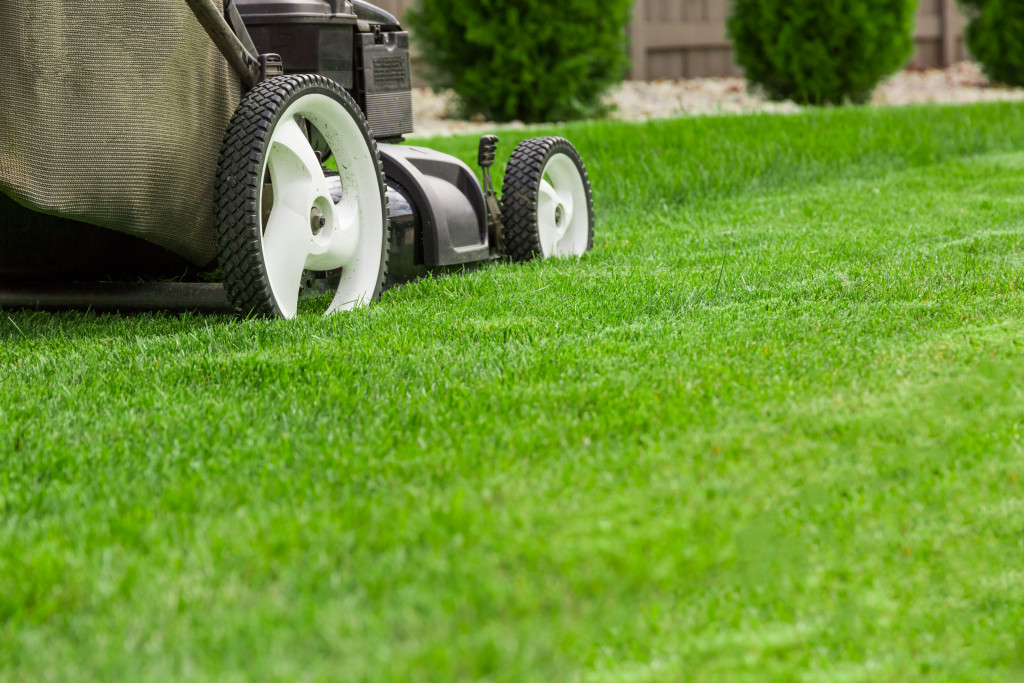Rough bluegrass (RBG), also known as rough stalk bluegrass, is a weed found in Mid-Atlantic lawns since time immemorial. It is scientifically known as Poa trivialis and is closely related to Poa pratensis or Kentucky bluegrass, a smooth meadow grass. This grass species sports boat-shaped tips and is scattered in yellow-green patches during the more moist autumn and spring.
They are easily negligible and can effortlessly blend with their greener Kentucky counterpart. Still, it can cause headaches for many lawned property owners as it turns brown or reddish more easily than other grass, although they are not necessarily dead in the hotter seasons. The reason for this is they are hypersensitive to heat. You won’t suspect their presence during cooler seasons, but it is when this weed propagates through their stolons or thin horizontal stems, and in June, when they are in full bloom, scatter more of their seeds from their seed heads even onto non-irrigated areas.
Understanding the Impact
Often viewed as a disease to Kentucky bluegrass, rough bluegrass is rather difficult to control once it sets foot on your lawn. Your lawn might even appear as if it’s struck by drought, leaving dry patches where there was once healthy grass leaving your property less attractive. You were reassured that with the regular maintenance you spend so much on, you’ll have a green thriving lawn by the warmer seasons, but, most often than not, you can say you’ll never know until it’s summer.
This leaves an impact on businesses like resorts, golf courses, and stadiums, whose value is hugely determined by their landscaping. So, how do we keep these speedy creepers from dominating our lawn? Before answering this question, it’s best to discuss first how to identify signs of rough bluegrass life in your lawn before they’re all over your lawn, looking like scalded grass in the summer.
First, you have to know what they look like. As mentioned earlier, the grass features boat-shaped tips and has horizontally stretching stolons, which are not present in its Kentucky counterpart. Another indicator is their lower sheaths resemble that of spring onion, light green and almost white, and slightly split before the node, unlike that of Kentucky bluegrass, which is all split to the node.
After having inspected your lawn for its presence, you can always opt to pluck these RBG weeds manually, but this wouldn’t prove you’ve removed most of them. This is more difficult to establish with wider lawns. Let’s now learn how to tackle this more efficiently.
It’s a known fact that RBG tends to be heat-intolerant and so it is best to keep our lawn dry. However, to keep the rest of our turf healthy, we can observe practices that will selectively nurture them but will inhibit the survival of RBG. One way is to not water your lawn frequently and, if you do water it, make sure to water it deeply.
Addressing the Issue

To keep your turfgrass healthy, you should have it fertilized and cared for by reliable lawn care services. They would recommend how many times this will be done in a year, say quarterly. Also, cut them regularly to maintain a three-inch height. Doing these will allow turfgrass to stay healthy and lush, making it more difficult for weed to penetrate.
Although RBG cannot be selectively controlled, treating your lawn with herbicides just before summer can work to a certain extent against them. Methiozolin is one example, but it is legal for use only in golf courses. The point is herbicides must be used with caution as they may still cost you healthy turf.
It is rather common for lawns to fall victim to RBG, whose patches appear like scalded patches of grass during summer. The best thing you can do if you have these scattered patches is to rake these patches off, dig them out from the roots, and place fescue that’s more adaptable to changing climate on these empty spots.
On the other hand, using glyphosate and allowing this treatment to work for 40 days at most is recommended for when rough bluegrass overrides the majority of your lawn. This, however, still does not guarantee killing all seeds and stolons. Studies suggest that RBG seeds and stolons can still survive even after exposure to extreme drought or herbicides.
There’s yet to be a herbicide that specifically targets rough bluegrass. Presently, this poses difficult management for lawn property owners with their difficulty to control. It’s either spot-correcting or, in the worst case, total lawn renovation. Take the necessary measures for a healthier and better yard.

